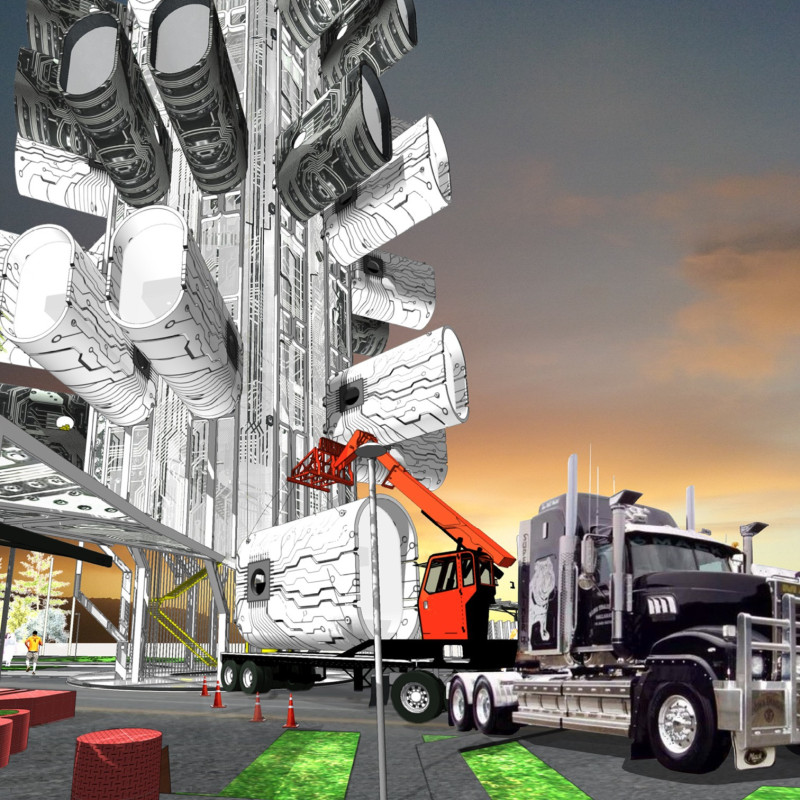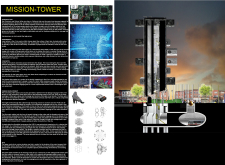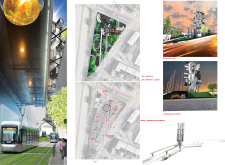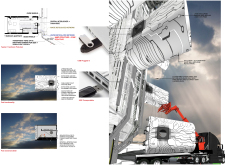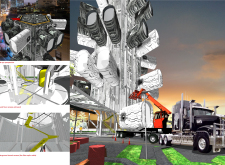5 key facts about this project
The Mission Tower's unique approach lies in its modular design, focusing on adaptability and efficient construction methods. The building comprises hexagonal living pods stacked vertically, each designed for individual residents or small families. This layout not only maximizes the use of limited urban space but also encourages a sense of community through shared amenities located on the lower levels of the structure.
A distinctive aspect of the design philosophy is its emphasis on technology. Each pod is outfitted with integrated USB ports and other technological interfaces, allowing residents to remain connected while promoting modern living standards. The use of reinforced glass plastic cladding provides durability and aesthetic appeal, while a robust steel framework ensures the structural integrity of the tower. Additionally, transparent fiber optics enhance the overall aesthetic, creating a modern and inviting atmosphere.
Public engagement is prioritized through the ground floor, which serves as a communal space featuring various resources and opportunities for residents and the public to come together. This aspect draws attention to the project's commitment to addressing societal challenges, providing not only housing but also a supportive environment for those in need. By incorporating green landscaping elements around the site, the project enhances the urban experience, fostering a sense of well-being amid the surrounding cityscape.
Moreover, the architectural design addresses environmental concerns through waste-reticulated network systems that optimize water and energy management across the building. This innovative approach aligns the project with sustainable practices, making it a forward-thinking solution to urban development in San Francisco.
For those interested in deeper insights into the Mission Tower project, an exploration of the architectural plans, architectural sections, and architectural ideas will provide a comprehensive understanding of its design principles and functionality. Further investigation into these elements will illustrate how this project effectively responds to contemporary urban challenges while enhancing community life.


